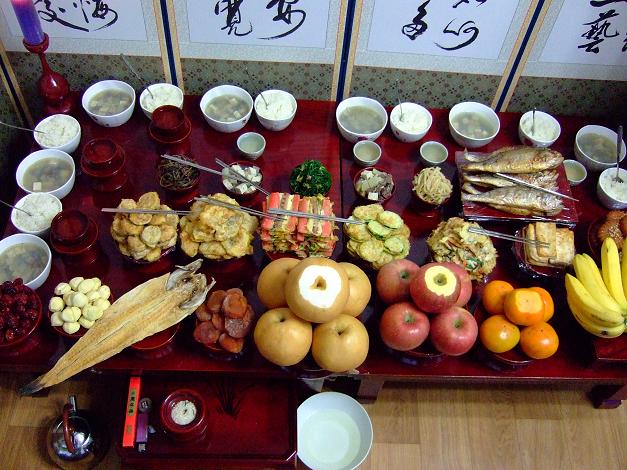Hello and welcome to the latest posting from Innersound Ancestry.
Today I am continuing with the second part of my explanation of the Korean cultural practise of respecting ancestors through ceremonial rites.
All the major ceremonies throughout the Korean calendar have a strong element of ancestral veneration.
The picture below shows food offered during an ancestral ceremony at the start of the lunar new year festival.

The picture above shows traditional Korean foods that are offered for ceremony. It is important to offer fish, meat and vegetables for ceremony. The women in a Korean household prepare the food while the men will perform the ceremonial rites.
The confuscian influence on korean society places great importance on making harmony. Harmony for Confuscians is created by having responsibility for one's relations with others.Husband and wife, parent and child etc. one's duty in these relationships is emphasised in confuscian thought. Therefore hierachy is also very important.Elders are greatly respected. This is reflected in the fact that food is offered to the ancestors first before anyone else can eat. Next the eldest men will be served, then women and the children last.
The day before the ceremony the women in a Korean household will cook traditional foods for the ceremony.
This will include ” Korean dumplings known as“mandu" in Korean , pan fried food known as “jeon”,
rice cakes called “tteok” and side dishes called “banchan”. Early in the morning of the Lunar New Year the food will be set up on wooden stands called "jegi" and placed on the ceremonial table . The men of the household will place spoons in the rice bowls to offer the food to the ancestors and wine or "sul" will be served in a style similar to a Japanese tea ceremony. After the offerings have been made a piece of paper with the ancestors names written on is burnt.
When the ceremony is finished the children of the household will bow to their elders and receive money frothe new year known as "sebe ton".
No comments:
Post a Comment